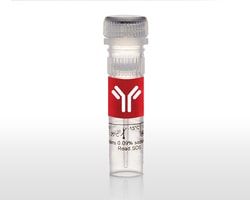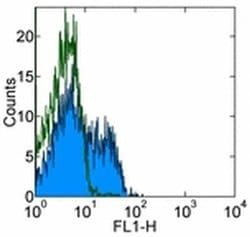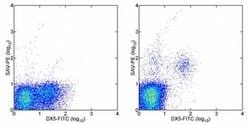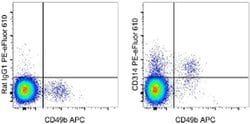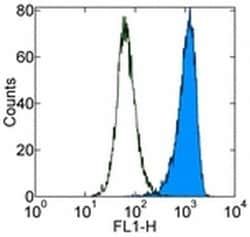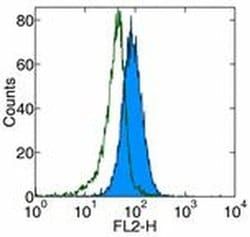NKG2A/C/E Monoclonal Antibody (20d5), Functional Grade, eBioscience™, Invitrogen™
Manufacturer: Invitrogen
Select a Size
| Pack Size | SKU | Availability | Price |
|---|---|---|---|
| Each of 1 | 16-589-638-Each-of-1 | In Stock | ₹ 2,56,765.00 |
16-589-638 - Each of 1
In Stock
Quantity
1
Base Price: ₹ 2,56,765.00
GST (18%): ₹ 46,217.70
Total Price: ₹ 3,02,982.70
Antigen
NKG2A/C/E
Classification
Monoclonal
Concentration
1 mg/mL
Formulation
PBS with no preservative; pH 7.2
Gene Accession No.
0
Gene Symbols
Klrc1, Klrc2, Klrc3
Purification Method
Affinity chromatography
Regulatory Status
RUO
Gene ID (Entrez)
16641, 16642, 58179
Content And Storage
4° C
Form
Liquid
Applications
Control, Flow Cytometry, Functional Assay
Clone
20d5
Conjugate
Functional Grade
Gene
Klrc1
Gene Alias
CD159a; cd159c; cd159e; Cluster of Differentiation 159a; killer cell lectin-like receptor subfamily C, member 1; killer cell lectin-like receptor subfamily C, member 2; killer cell lectin-like receptor subfamily C, member 3; Klrc1; Klrc2; Klrc3; natural killer cell group 2E cell receptor; NKG2; NKG2A; NKG2-A/NKG2-B type II integral membrane protein; NKG2B; NKG2C; Nkg2e
Host Species
Rat
Quantity
5 mg
Primary or Secondary
Primary
Target Species
Mouse
Product Type
Antibody
Isotype
IgG2a κ
Description
- Description: The 20d5 monoclonal antibody reacts with the mouse NKG2A, C, and E
- NKG2 molecules belong to a C-type lectin-like family of cell surface receptors expressed by mouse NK and NKT cell lineages
- NKG2 molecules form heterodimeric complexes with CD94 and are responsible for recognition of non-classical MHC class I antigen Qa-1
- When co-staining with NKG2A^B6 clone 16a11, it is important to stain for NKG2A-B6 first then subsequently with NKG2A/C/E, as steric hindrance has been observed if co-stained concurrently
- Applications Reported: This 20d5 antibody has been reported for use in flow cytometric analysis
- Applications Tested: This 20d5 antibody has been tested by flow cytometric analysis of mouse splenocytes
- This can be used at less than or equal to 0.06 μg per test
- A test is defined as the amount (μg) of antibody that will stain a cell sample in a final volume of 100 μL
- Cell number should be determined empirically but can range from 10^5 to 10^8 cells/test
- It is recommended that the antibody be carefully titrated for optimal performance in the assay of interest
- Storage and handling: Use in a sterile environment
- Filtration: 0.2 μm post-manufacturing filtered
- Purity: Greater than 90%, as determined by SDS-PAGE
- Endotoxin Level: Less than 0.001 ng/μg antibody, as determined by LAL assay
- Aggregation: Less than 10%, as determined by HPLC
- Natural killer (NK) cells are lymphocytes that can mediate lysis of certain tumor cells and virus-infected cells without previous activation
- They can also regulate specific humoral and cell-mediated immunity
- The protein encoded by this gene belongs to the killer cell lectin-like receptor family, also called NKG2 family, which is a group of transmembrane proteins preferentially expressed in NK cells
- This family of proteins is characterized by the type II membrane orientation and the presence of a C-type lectin domain
- This protein forms a complex with another family member, KLRD1/CD94, and has been implicated in the recognition of the MHC class I HLA-E molecules in NK cells
- The genes of NKG2 family members form a killer cell lectin-like receptor gene cluster on chromosome 12
- Four alternatively spliced transcript variants encoding two distinct isoforms have been observed.

